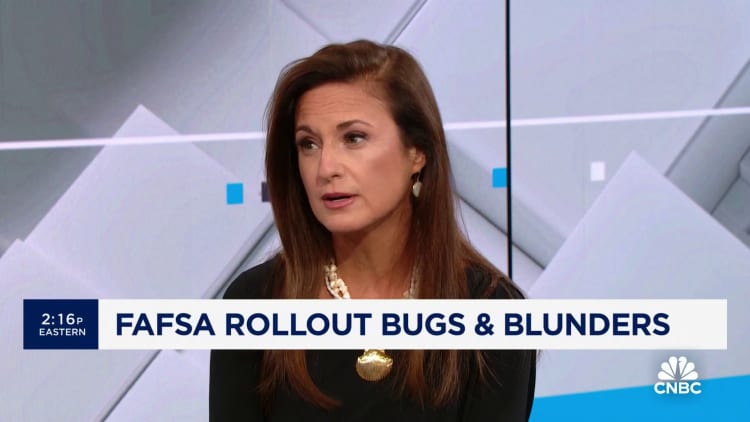
In an already difficult year for college applicants, when it came down to picking a school, there was one factor that outweighed all others: financial aid.
Even in ordinary years, choosing a college largely hinges on the amount of financial aid offered and the breakdown among grants, scholarships, work-study opportunities and student loans.
In 2024, however, ongoing issues with the new federal financial-aid application have heightened the role of aid in college choices. Because of problems with the new form, financial aid award letters were delayed and some high school seniors had trouble applying for any aid at all.
More than three-quarters, 76%, of students said the financial aid amount awarded to them, and the overall financial aid process, were the top drivers in their choice about where to go to college, according to a survey by Ellucian and EMI Research Solutions conducted in March.
That outpaces parental influence, location, campus culture and even the degree programs offered.
More from Personal Finance:
The best private and public colleges for financial aid
Harvard is back on top as the ultimate ‘dream’ school
More of the nation’s top colleges roll out no-loan policies
“This year, we are just seeing such deep concerns around college costs, more than in the past couple of years,” said Robert Franek, editor-in-chief of The Princeton Review, which recently ranked colleges by how much financial aid is awarded. “There is a stress level that is palpable.”
Higher education already costs more than most families can afford, and college costs are still rising. Tuition and fees, plus room and board, for a four-year private college averaged $56,190 in the 2023-2024 school year; at four-year, in-state public colleges, it was $24,030 per year, according to the College Board.
Experts predicted that problems with the new Free Application for Federal Student Aid would weigh heavily on enrollment, although it was initially unclear how much of a role it would play in decisions between schools.
Ellucian’s study found that 44% of the 1,500 students surveyed said they’d switch their top choice school if offered just $5,000 more in aid.
“It’s a surprisingly small amount when you look at the total cost,” Ellucian CEO Laura Ipsen said of the difference that award money made in the decision-making process.
The FAFSA’s impact on decision-making
“It was not only about the financial aid piece, which is huge, but comparing different offers coming in at different times,” said Eric Greenberg, president of Greenberg Educational Group, a New York-based consulting firm. “It did have a big impact on the way people made decisions.”
In previous years, financial aid award letters were sent out at about the same time as admission letters, meaning students had several weeks to compare offers ahead of National College Decision Day, the deadline for most admitted students to decide on a college.
Because of the extensive delays this year, some students won’t get their final financial aid award letter until the end of August, the U.S. Department of Education said in a recent update.
That could mean some students will start their fall semester before they get key information about how much that’s going to cost. It also marks “the first admission” by the Education Department that the FAFSA won’t be fully functional until after the start of the 2024-25 award year, which began July 1, according to higher education expert Mark Kantrowitz.
“Time is so critical when students are making decisions,” Ellucian’s Ipsen said.
“The sooner you can get an offer into students’ hands, the more likely they are to take it,” she said. And it’s not just about whether they will get to go to their top-choice school, she added, but whether they go to college at all.
The FAFSA is still an obstacle
As of June 21, only 45% of new high school graduates have completed the FAFSA, according to the National College Attainment Network, or NCAN. A year ago, that number was 52%.
Submitting a FAFSA is one of the best predictors of whether a high school senior will go on to college, NCAN also found. Seniors who complete the FAFSA are 84% more likely to enroll in college directly after high school, according to an NCAN study of 2013 data.
The FAFSA serves as the gateway to all federal aid money, including loans, work study and grants, the latter of which is the most desirable kind of assistance because it typically does not need to be repaid.
Greenberg advises the students he works with to explore other sources of merit-based aid, as much as possible.
“A lot of people assume that only the most elite students will get merit money; that’s not necessarily true at all,” he said. “We have students going to private colleges much more cheaply than they would state colleges.”

